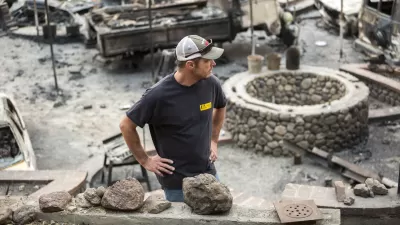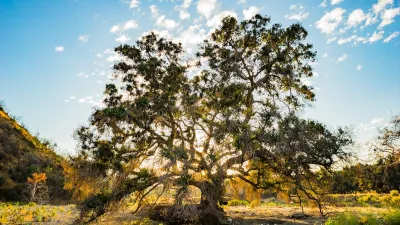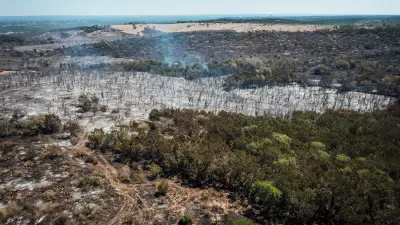Houses that aren't vulnerable to embers blowing in the wind, could save the government and homeowners millions.

Fire damage can seem random. Sometimes houses very close to each other suffer very different consequences from wildfires. Fire expert Jack Cohen encountered the kinds of hazard presented by building materials while investigating ways to combat the spread of wildfires. "People were calling in about houses on fire long before the fire front ever reached their neighborhoods," 99 Percent Invisible reports. It turned out the culprit behind these burning homes were embers carried by the winds landing on flammable wooden shingles.
While not using a flammable housing material would seem to be common sense, Cohen was able to codify the impact of design choices. Cohen's research lead to the conclusion that more emphasis should be put on building fire-resistant properties and less on fighting fires.
"In other words, if structures near fire-prone areas were designed and maintained to withstand fire, we might not need to fight some wildfires at all," 99 Percent Invisible reports. Cohen's argument is further bolstered by the sometimes counterproductive outcomes of putting out wildfires. Because where forests that have not had a burn for many years sometimes become tinder boxes of flammable material, meaning sometimes it would be better to allow a controlled burn to take place than to fight all fires.
"Last year, the federal government spent more than 2 billion dollars fighting fires and just a small fraction of that on prevention and mitigation efforts," 99 Percent Invisible writes. Shifting some of those resources might improve safety for people and property.
FULL STORY: Built to Burn

Planetizen Federal Action Tracker
A weekly monitor of how Trump’s orders and actions are impacting planners and planning in America.

Maui's Vacation Rental Debate Turns Ugly
Verbal attacks, misinformation campaigns and fistfights plague a high-stakes debate to convert thousands of vacation rentals into long-term housing.

Restaurant Patios Were a Pandemic Win — Why Were They so Hard to Keep?
Social distancing requirements and changes in travel patterns prompted cities to pilot new uses for street and sidewalk space. Then it got complicated.

In California Battle of Housing vs. Environment, Housing Just Won
A new state law significantly limits the power of CEQA, an environmental review law that served as a powerful tool for blocking new development.

Boulder Eliminates Parking Minimums Citywide
Officials estimate the cost of building a single underground parking space at up to $100,000.

Orange County, Florida Adopts Largest US “Sprawl Repair” Code
The ‘Orange Code’ seeks to rectify decades of sprawl-inducing, car-oriented development.
Urban Design for Planners 1: Software Tools
This six-course series explores essential urban design concepts using open source software and equips planners with the tools they need to participate fully in the urban design process.
Planning for Universal Design
Learn the tools for implementing Universal Design in planning regulations.
Heyer Gruel & Associates PA
JM Goldson LLC
Custer County Colorado
City of Camden Redevelopment Agency
City of Astoria
Transportation Research & Education Center (TREC) at Portland State University
Jefferson Parish Government
Camden Redevelopment Agency
City of Claremont





























